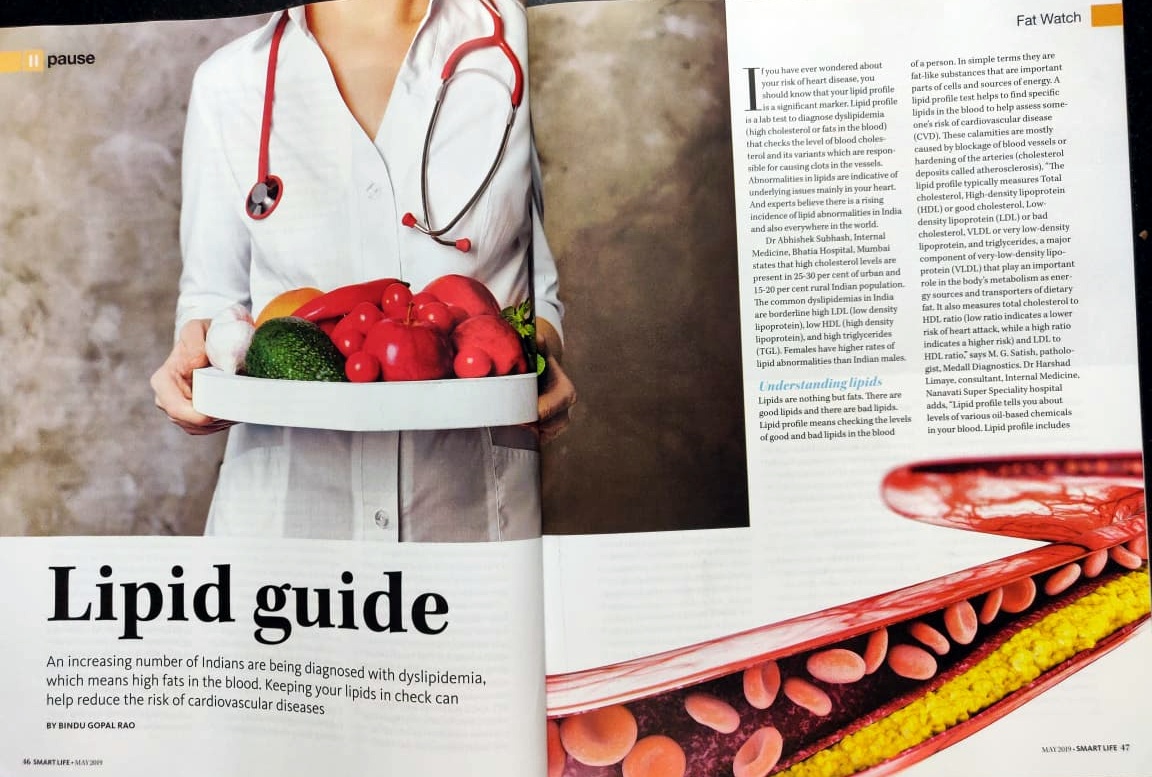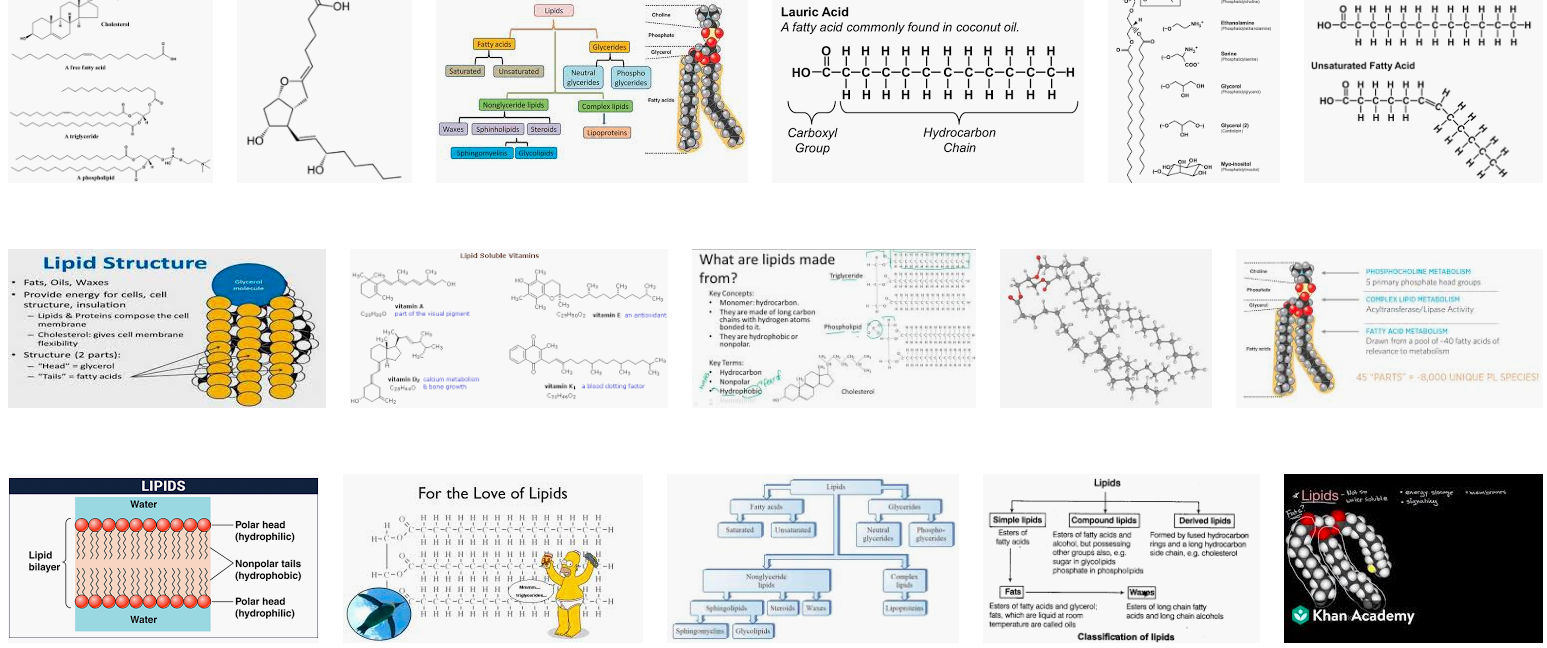Lipids are slowly but surely coming into the forefront when it comes to preventive healthcare.
Lipid profile is a lab test to diagnose dyslipidaemia that checks the level of blood cholesterol and its variants which are responsible for causing clots in the vessels. Abnormalities in lipids are indicative of underlying issues mainly in your heart.
Understanding Lipids
Lipids are nothing but fats. There are good lipids and there are bad lipids. Lipid profile means checking the levels of good and bad lipids in the blood of a person. In simple terms they are fat-like substances that are important parts of cells and sources of energy. A lipid profile test helps to find specific lipids in blood to help assess someone’s risk of cardiovascular disease (CVD). These calamities are mostly caused by blockage of blood vessels or hardening of the arteries (cholesterol deposits called atherosclerosis). “The lipid profile typically measures Total cholesterol, High-density lipoprotein (HDL) or good cholesterol, Low-density lipoprotein (LDL) or bad cholesterol, VLDL or very low-density lipoprotein, Triglycerides a major component of very-low-density lipoprotein (VLDL) that play an important role in the body’s metabolism as energy sources and transporters of dietary fat, Total Cholesterol to HDL ratio (Low ratio indicates a lower risk of heart attack, while a high ratio indicates a higher risk) and LDL to HDL ratio,” says M. G. Satish, Pathologist, Medall Diagnostics. Dr. Harshad Limaye, Consultant Internal Medicine, Nanavati Super Speciality hospital adds, “lipid profile tells you about levels of various oil based chemicals in your blood. Lipid profile includes various different oily chemicals that are important for metabolism and synthetics of various chemicals important for body function for example steroids.”
Women at Risk
Dr. Abhishek Subhash, Internal Medicine, Bhatia Hospital, Mumbai says, “high cholesterol levels are present in 25-30 % of urban and 15-20 % rural Indian population. The common dyslipidemias in India are borderline high LDL (low density lipoprotein), low HDL (high density lipoprotein), and high triglycerides (TGL). Females significantly have higher rates of lipid abnormalities than Indian males as per the ICMR- INDIAB study (prevalence of dyslipidemia in urban and rural India; 2014). The dyslipidemia are also increasing in Indian women due to change in lifestyle accompanied by faulty and poor diet and habits. This is documented in a study titled ‘Recent trends in epidemiology of dyslipidemia in India; Indian Heart Journal volume 69, Issue 3, May-June 2017’.” Dr. Rohit Rungta, Counsultant, Medica Superspecialty Hospital adds, “greater prevalence of dyslipidemias in women, especially after the middle-age is documented. It has been reported that from ages 20–55 years men tend to have higher cholesterol levels but after this age the cholesterol levels increase rapidly in women and exceed those in men. This may be related to earlier age of menopause in Indian women compared to the US counterparts, this may also be due to premature development of greater cardiovascular risk in Indian women due to a lower age at menopause. Gender-related difference in decline of cholesterol lipoproteins in the present study is an important finding. Lesser focus on prevention in women and lower use of statins may also be important. Gender disparities in use of statins has also been reported in coronary secondary prevention studies including from India.”
Abnormalities on the Rise
There is a rising incidence of lipid abnormalities seen in India and also everywhere in the world. This is seen in almost everyone, including women. “The causative factors for this are multi-factorial. People are eating different kind of foods than what their fore fathers ate. Many people have stopped celebrating festivals – when we used to eat lot of healthy foods balancing the fatty foods we eat in festivals like sprouts and millets. Fast food consumption is becoming the norm. Preserved food consumption is becoming routine. Sedentary life styles with limited or less active exercises are becoming the routine for everyone. There is an increasing dependence on using machines than understanding the benefits of climbing stairs,” says Dr. Kishore Kumar, Founder Chairman, Cloudnine Group of Hospitals, Bengaluru. Dr. Aabid Khan, MBBS, DNB, Medicine, AXIS Hospital avers, “undoubtedly the incidence of dyslipidaemia is exponentially rising in Indian population. This is irrespective of the age and gender. the most important factor responsible for it is lifestyle, i.e. food habits, sedentary lifestyle, pollution, genetic factors, stress and anxiety. According to a research study on Lipid Profile, Diet and Other Cardiovascular Risk Factors in Children Born to Parents Having Premature Ischemic Heart Disease has proven that children of IHD patients have significant incidence of dyslipidaemia. The risk factors like BMI, diet and physical activity increase the incidence of dyslipidaemia. Therefore, all children of premature IHD patients should be screened for dyslipidaemia.”
Heart of the Matter
Raised lipids are one of the important major risk factor for coronary heart disease. The increased LDL leads to atherosclerosis i.e. development of plaque and deposits of cholesterol on heart vessels which increase a risk of heart attack. Dr. Upendra Kumar Singh, Senior Physician, ProCare Wellness & Lifestyle Clinic says, “it is indicative of heart ailment because high level of LDL, cholesterol and triglycerides causes atherogenesis in coronary vessels which leads to blockage and causing heart attacks and other cardio vascular diseases.” Take the case of Saakshi Thakur, a 48-year old female home maker from Mumbai was admitted with shortness of breath, abdominal pain, vomiting, giddiness, she was visited by Dr. Aabid Khan at home to have a high BP of 180/120mm hg chest discomfort and a history of cough on and off. She was found to have accelerated hypertension with acute coronary syndrome with raised lipid levels. Her lipid profile showed triglycerides 496 (<150), total cholesterol 336 (up to 200), HDL 39 (40-60) and LDL-high (up to 100). Her cardiac marker troponin-I was also raised, which was indicative of a cardiac event. In the above case it is clearly demonstrated how raised lipids can lead to heart ailments. Also being a home maker, she had a sedentary lifestyle and unhealthy eating habits. She was admitted to the intensive care unit and has now recovered and discharged with anti-lipid medicines. Anil G. Ballani, Consultant Internal Medicine, Hinduja Hospital- Khar says, “two large studies, namely the Ascot Trial and Jupiter Trial comprehensively showed that reducing cholesterol reduced the heart disease by almost 35-45%.”
Take Care
Lifestyle modification including avoiding junk food, regular exercise, eating more fresh vegetables and fruits along with other functional activities can maintain healthy lipid levels in the body. “Stop smoking as it lowers your HDL, (good) cholesterol level. Smoking in itself is a major risk factor for heart disease. Change the way you eat to incorporate low-fat eating habits. Lose weight if necessary and talk to your doctor about a sensible exercise plan for you. An active lifestyle helps all the lipids, keeps you trim and fit and gives you energy, too. Women in child bearing age have low cholesterol because of effects of female hormone. After menopause, lipid abnormalities start so ensure you take care. Alcohol must either be stopped or had in moderation,” advices Dr. Dilip Kumar Pahari, Senior Vice Chairman, Director & Senior Consultant – Nephrology, Medica Superspecialty Hospital. Having your lipids under control is one of the best ways to preempt cardio vascular issues, so take charge of them to live a healthier life.
This story first appeared in Smartlife Magazine’s May 2019 issue here:

